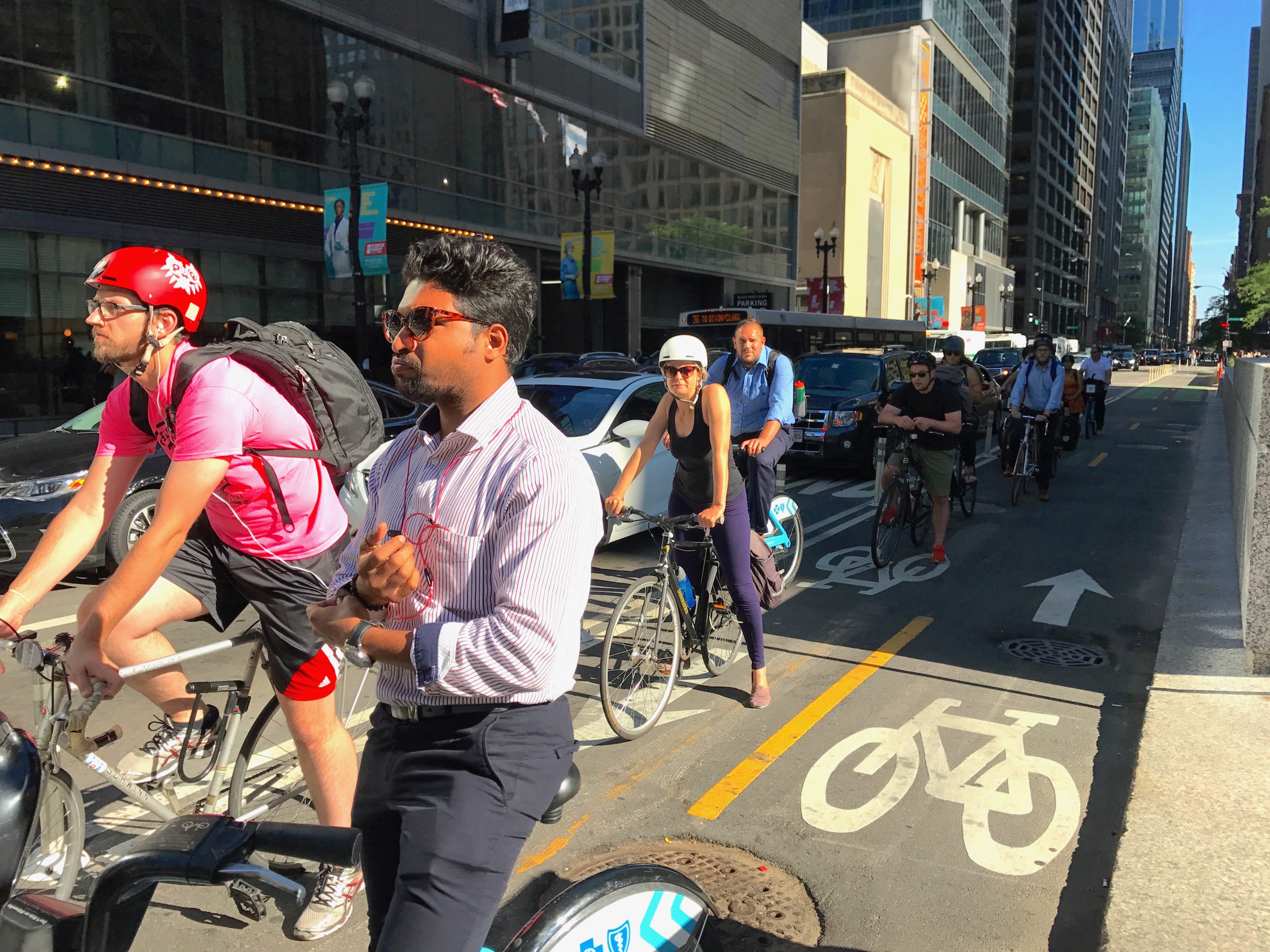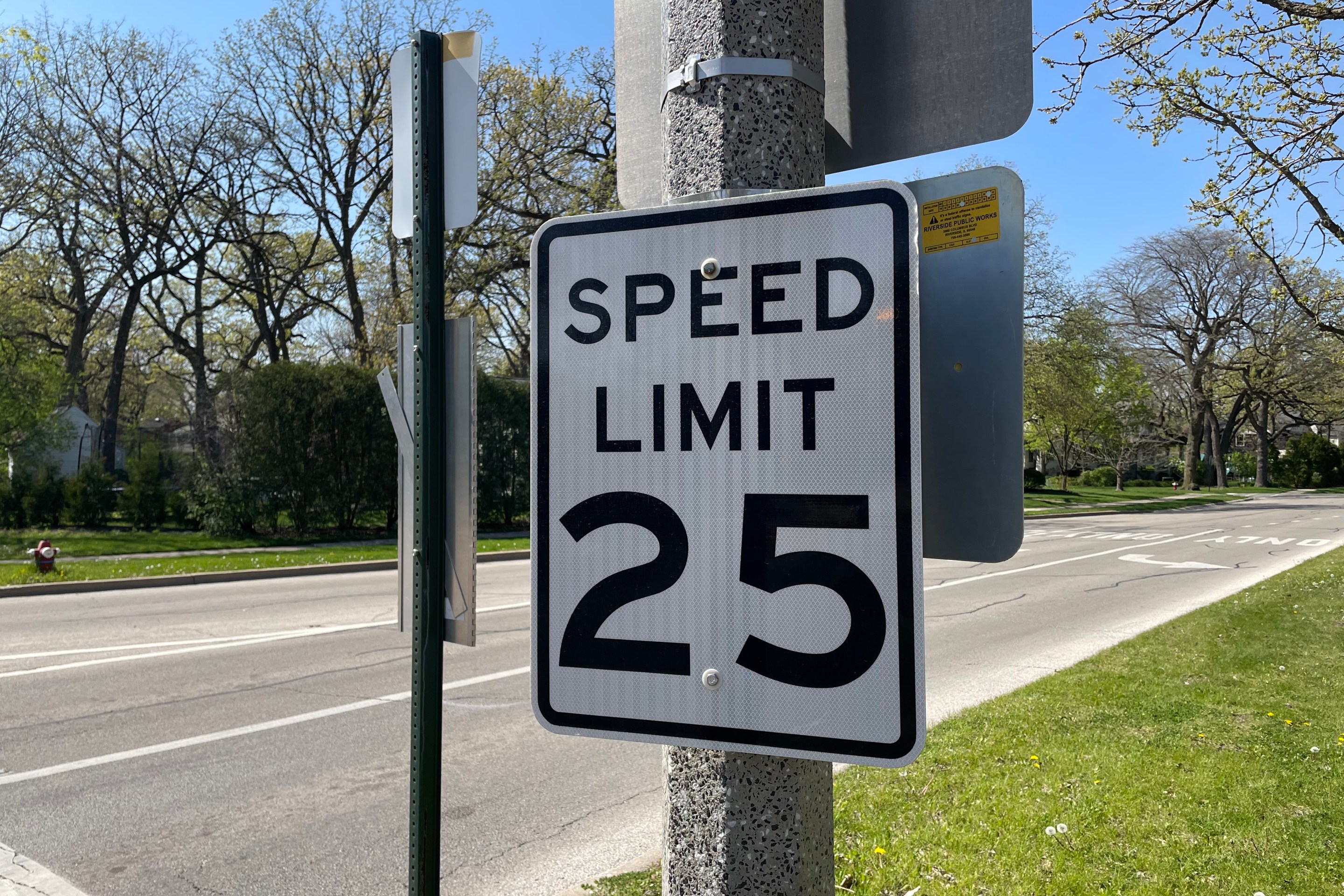As detailed in a recent Streetsblog USA article by Michael Andersen of PlacesForBikes and Ken McLeod of the League of American Bicyclists, the total number of U.S. bike commuters dropped slightly a bit in 2016, for the second year in a row, to 863,979, according to Census estimates published earlier this month. "That’s far enough beyond the margins of error to all but guarantee that U.S. bike commuting has slipped since global gas prices plummeted in late 2014," they wrote.
Previously rising bike mode share rates -- the percent of commuters who ride a bike for most of their trip to work -- have leveled off, or even fallen slightly, in major American cities like New York, Los Angeles, and Philadelphia, according to the Census. Mode share even fell slightly in smaller cities with relatively high levels of biking, such as Minneapolis, Portland, Seattle, and San Francisco. Here’s a full report on the latest one-year Census estimates for bike mode share.
According to the Census, Chicago wasn't immune to the national trend of bike use hitting a plateau. Our mode share for 2016 was 1.7 percent, the same as for 2014.
Maybe I'm in denial here, but anecdotally these underwhelming Census results don't seem to match up with what I'm seeing on the streets of Chicago. The Lakefront Trail and Milwaukee Avenue -- the city's busiest biking street -- seem more crowded than ever. By October 2015 the city reached its goal of installing 100 miles of buffered and protected bike lanes. The Divvy system, which launched in June 2013, recently expanded to more than 580 stations and 5,800 bikes, covering a huge swath of the city, and the system broke 10 million rides earlier this year.
It also seems to me that cycling has increased in parts of the city beyond the more affluent North and Northwest Side neighborhoods usually thought of as hotbeds for biking. The Divvy for Everyone program, which offers $5 memberships to lower-income Chicagoans and waives the usual credit card requirement, has enrolled more than 2,500 members since it launched in July 2015. And recently groups like Slow Roll Chicago have been promoting cycling on the South and West sides, drawing upwards of 100 participants on some rides.
So is it possible that the Census data that says our city's bike mode share didn't grow at all between 2014 and 2016 is wrong? Yes, according to Steven Vance, Streetsblog Chicago's resident statistics expert. "These are one-year estimates and the margin of error is extremely high, which can hide any losses or gains," he says. "Only about 3.5 million people are surveyed each year. Only about 94,000 people are surveyed in Illinois, and even fewer are surveyed in Chicago."
Another thing to consider is that the way the Census counts bike mode share is likely to give the impression that the percentage of residents who bike for transportation in a city is lower than it actually is. For example, if you ride a Divvy to your local 'L' station, take the train most of the way to work, and then grab another Divvy to pedal the last mile or so to your workplace, the Census counts that as a transit trip, not a bike commute.
And work commutes are a particularly challenging type of urban bike trip, since many employees may worry they won't look presentable if they show up to their job after riding a bike. It's likely that a higher percentage of people are using bikes for trips to retail, entertainment, visiting friends and relatives, etc., in Chicago than for work commutes. Moreover, the Census asks respondents about work trips taken in April, which isn't prime biking season in our city.
So while it's possible that Chicago bike mode share really has leveled off due to lower gas prices or a stronger economy that's allowing more people to buy cars, we shouldn't necessarily accept the notion that cycling has plateaued here based on the new Census report. The number of people biking to work in Chicago increased by 150 percent during the first decade of this millennium, according to the Census. I could be wrong, but my gut feeling is that the amount of biking here is continuing to grow, not stagnate.



